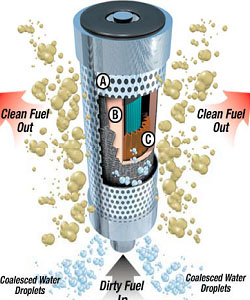After coal was displaced as an energy source by natural gas, mainly due to environmental reasons, since burning natural gas is much cleaner than burning coal, coal returns to the stage of energy production, this time as "clean coal".

After coal was displaced as an energy source by natural gas, mainly due to environmental reasons, since burning natural gas is much cleaner than burning coal, coal returns to the stage of energy production, this time as "clean coal". The fact that coal is a common source of energy (from fossil sources) makes it relatively cheap. The fact that today there is technology that makes it possible to burn coal in a way that will result in low pollutant emissions (relatively) makes it more acceptable to environmentalists and the production/mining companies and governments alike.
Figures provided by the International Energy Agency (IEA) show that until 2030 there will be an increase of 1.4% per year in coal consumption, where in 2030 the consumption will be 7.3 billion tons, a billion tons more than today. The demand for coal is pushed by the global economy on the one hand and the rise in oil prices on the other. Countries like China and India where the economy is growing rapidly and have coal deposits that are currently not being used will turn to the development of the coal cushion.
Environmentalists (still) see coal as a source of air and atmosphere pollution because of the continuing attitude from the "steam era". In order to allow the use of coal without causing pollution, we are switching to the "clean coal" Clean coal technology (CCT) method, a name given to the umbrella of technological concepts - technologies that are mostly still in experimental stages, technologies that improve the "environmental performance" of burning coal, meaning: producing more energy from the same amount of coal and emit less pollutants.
A method that is already accepted and implemented because it is simple (technologically) is the shredding of the raw coal and its washing to separate it from unwanted materials. The very fact that clean coal is obtained allows for efficient combustion and efficient combustion spreads less pollutants.
There is a method in which the coal is gasified (turned into hydrogen gas), a process that will be carried out while collecting the pollutants and removing them from the system in a "clean" way - by "geological" storage/landfilling. The gas - hydrogen - is burned to obtain clean energy, the resulting gas can also be transported for use in various places and industries.
In the conventional method of burning the coal to drive turbines (to produce electricity), the burning provides less than 30% of the energy stored in the coal. If the combustion efficiency is improved with "advanced burners" an efficiency of 40% is reached and "biological" combustibles (animal fat, etc.) can be burned together with the coal, thus saving about 20% in the combustible material, that is, less emission of pollutants, And again the intention is to collect/absorb the pollutants and prevent them from reaching the atmosphere. According to the developers of the method, the same emission level is reached as in a gas turbine.
Burning coal emits many pollutants: sulfur dioxide which causes acid rain, nitrogen oxide which causes the formation of ozone close to the ground, solid particles which together with the ozone cause smog, and of course the known and known carbon dioxide, for each of the pollutants there are methods Neutralization and collection that have been proven to be possible - technologically, methods that await industrial application on a large scale, which will allow "clean" utilization of coal.
The European Union, Japan, Australia, industrial companies in the USA are all busy developing the methods that will allow the "clean" use of coal. The problem is that the development of the methods for "clean" use may take a long time, longer than we have, since the continued emission of pollutants brings us closer to the point of "no return", that is, to a situation where the level of greenhouse gases will be far above the ability of the environment (ocean forests) to absorb, And the results are already visible today.
